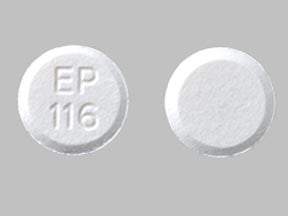
Furosemide Coupons & Savings Card – Discount Prices from $5.98
Generic for: Lasix, Furoscix, Lasix onyu
My prescription
Edit
20MG, Furosemide (30 Tablets)
Select pharmacy

CVS
$18.63
COUPON PRICE
Walgreens
$5.98
COUPON PRICE
Albertsons
$6.80
COUPON PRICE
Walmart
$7.28
COUPON PRICEFurosemide savings card
Show this card to your pharmacist
Walgreens
$5.98
BIN
ID
PCN
GRP
015995
LHEV760151
GDC
GDRX
Powered by
More prescriptions for hypertension
More prescriptions for hypertension
Price history for Lasix (brand) & Furosemide (generic)
30 Tablets, 20MG
Average retail price for Lasix
Average retail price for Furosemide
Average SaveHealth price for Furosemide
Our price history data is based on aggregated prescription data collected from participating pharmacies in America. Our prescription data updates daily to reflect the latest price changes. If you notice a missing data point, it means there wasn't sufficient data available to generate a monetary value for that date.
We analyzed Furosemide prices for (20MG, 30 Tablets) over the last 12 months. The average retail price was $26.98, while the average price using the SaveHealth discount card was $19.94. That's a savings of approximately 26.09% when using our Furosemide coupon.
Compared to the generic version, Lasix had an average price of $32.99 over the same time period. With the SaveHealth savings card, Furosemide is 39.56% cheaper on average than Lasix.
*Retail prices are based on pharmacy claims data, and may not be accurate when we don't have enough claims.
Furosemide dosage forms
Dosage Quantity Price from Per unit 20MG 30 Tablets $9.77 $0.33 20MG 45 Tablets $10.16 $0.23 20MG 60 Tablets $10.55 $0.18 20MG 90 Tablets $19.89 $0.22 20MG 180 Tablets $21.78 $0.12 40MG 30 Tablets $9.92 $0.33 40MG 45 Tablets $10.38 $0.23 40MG 60 Tablets $10.84 $0.18 40MG 90 Tablets $19.89 $0.22 40MG 180 Tablets $21.78 $0.12
| Dosage | Quantity | Price from | Per unit |
|---|---|---|---|
| 20MG | 30 Tablets | $9.77 | $0.33 |
| 20MG | 45 Tablets | $10.16 | $0.23 |
| 20MG | 60 Tablets | $10.55 | $0.18 |
| 20MG | 90 Tablets | $19.89 | $0.22 |
| 20MG | 180 Tablets | $21.78 | $0.12 |
| 40MG | 30 Tablets | $9.92 | $0.33 |
| 40MG | 45 Tablets | $10.38 | $0.23 |
| 40MG | 60 Tablets | $10.84 | $0.18 |
| 40MG | 90 Tablets | $19.89 | $0.22 |
| 40MG | 180 Tablets | $21.78 | $0.12 |
| 80MG | 30 Tablets | $10.49 | $0.35 |
| 80MG | 60 Tablets | $11.98 | $0.20 |
| 80MG | 90 Tablets | $21.69 | $0.24 |
| 80MG | 120 Tablets | $22.92 | $0.19 |
| 80MG | 180 Tablets | $25.38 | $0.14 |
Furosemide Warnings
This medication comes with several important safety warnings and contraindications that you should be aware of before use. It is crucial to review these carefully and discuss any concerns with your healthcare provider.
Dehydration and Electrolyte Imbalance: Furosemide (Lasix) is a potent diuretic that can lead to severe dehydration and electrolyte imbalances, which may be life-threatening. The risk is elevated for those taking additional medications such as long-term laxatives or corticosteroids. Your healthcare provider will tailor your dosage to suit your needs, and it is essential to take the medication exactly as prescribed. Regular follow-up appointments and lab tests are important. Seek immediate medical assistance if you experience symptoms like dry mouth, thirst, weakness, drowsiness, muscle cramps, rapid heartbeat, nausea, or vomiting. Risk groups include older adults, individuals on higher doses, those with liver issues, individuals with low dietary salt or electrolytes, and those taking interacting medications.
Caution in Liver Impairment: Patients with liver issues are more prone to severe fluid or electrolyte imbalances, particularly when starting furosemide (Lasix). Your healthcare provider may initiate your treatment in a hospital setting for closer monitoring and might prescribe potassium supplements or other medications to prevent imbalances.
Hearing Concerns: Furosemide (Lasix) can cause ringing in the ears or hearing loss, especially with high doses or injections. Adhere strictly to the prescribed dosage and maintain regular follow-ups with your healthcare provider. Report any new hearing issues immediately. Risks are heightened for those with kidney problems, those taking higher than recommended doses, and individuals on other hearing-impairing medications.
Urination Problems: As furosemide (Lasix) increases urination, it can exacerbate issues for those with difficulty emptying their bladder, potentially leading to complications like infections or kidney problems. Your healthcare provider will monitor your dosage closely, particularly when you start the medication. At risk are individuals with bladder emptying difficulties or an enlarged prostate.
Allergic Reactions: If you have allergies to sulfa-containing medications, you might experience similar reactions to furosemide (Lasix). Inform your healthcare team of any medication allergies, especially severe ones. Discontinue use and seek medical help if you notice a rash or other allergic symptoms. Individuals with sulfa allergies are at risk.
Gout: While rare, furosemide (Lasix) can elevate uric acid levels and trigger or worsen gout. Those with a history of gout or kidney issues are at increased risk. Contact your healthcare provider promptly if you experience swollen, red, and painful joints. Risk groups include those with a personal or family history of gout and existing kidney problems.
Contraindications: This medication should not be used by individuals whose kidneys cannot produce urine, as it may pose serious health risks. If this condition applies to you, consult your healthcare provider before taking this medication.
Furosemide Side Effects
Common side effects:
- dizziness
- headache
- increased urination
- lightheadedness when standing up quickly
- skin sensitivity to sunlight
Less common but important to monitor:
- blurred vision
- loss of appetite
- stomach upset
- diarrhea
- constipation
- vomiting
- nausea
- stomach cramps
- rash
Serious side effects:
- extreme thirst
- muscle cramps
- irregular heartbeat
- confusion
- changes in urine output
- painful skin rash
- hearing loss
- numbness or tingling in the limbs
- signs of liver problems (stomach pain or yellowing of the eyes or skin)
- severe dizziness
- trouble breathing
- swelling of the face or throat
